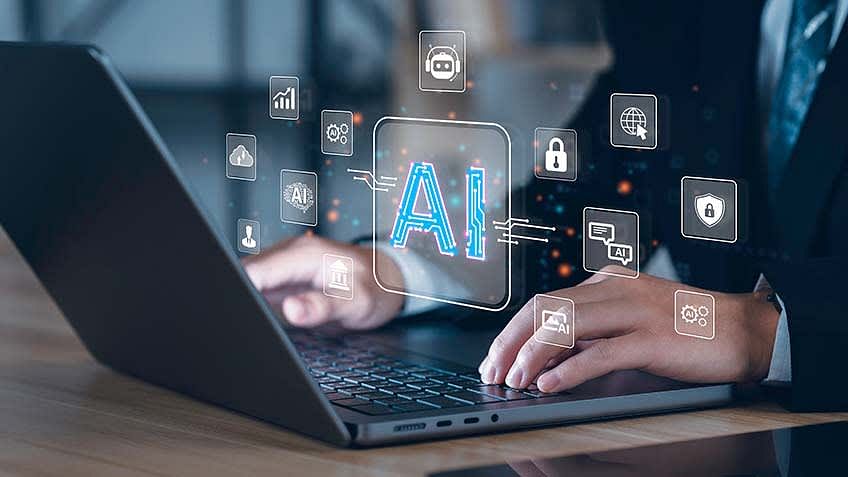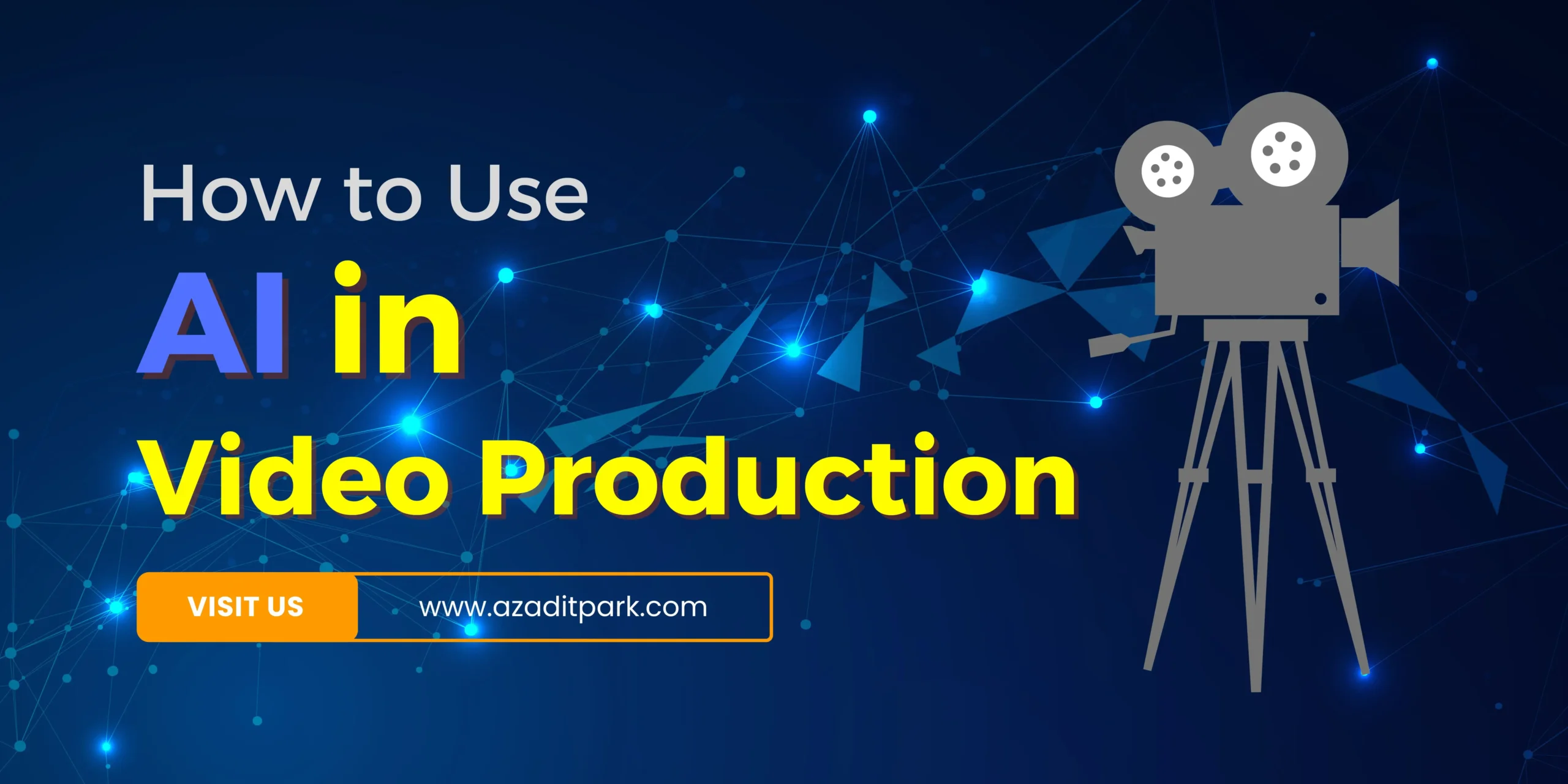To use AI in video production, utilize machine learning algorithms to automate video editing, identify scenes, and suggest suitable music. This technology can also analyze hours of footage, select the best clips, and improve the viewing experience through AI-powered encoding solutions.
However, it’s important to note that AI cannot fully replace human video editors and their unique value in the industry.
The Power Of Artificial Intelligence In Video Production
Artificial Intelligence (AI) has revolutionized various industries, and video production is no exception. AI’s ability to analyze large amounts of data and make intelligent decisions has transformed the way videos are created and edited. From automating video editing to scene identification and even selecting the perfect music, AI has become an indispensable tool for video production professionals. Let’s delve into the role of AI in video production and discover its incredible potential.
Ai’s Role In Automating Video Editing And Scene Identification
In the past, video editing was a time-consuming and manual process. With the emergence of AI, video editing has become more efficient and streamlined. AI algorithms can analyze hours of footage and quickly select the best clips based on factors such as emotions, continuity, and shot quality.
This automated approach to video editing saves editors countless hours of tedious work, allowing them to focus on more creative aspects of the production. Additionally, AI can identify scenes within the video, making it easier to organize and categorize footage for seamless editing.
Improving Performance Through Pattern Recognition And Machine Learning Algorithms
One of the key strengths of AI is its ability to recognize patterns and improve performance without explicit programming. In video production, AI utilizes machine learning algorithms to enhance various aspects of the process.
Through pattern recognition, AI can analyze data such as viewer preferences and engagement metrics to identify trends and optimize content creation. This data-driven approach helps video producers understand what resonates with their audience and make informed decisions about their video production strategies.
Furthermore, AI can learn from previous video projects, applying the knowledge gained to future productions. This continuous learning process allows for the refinement and improvement of video production workflows over time.
Selecting Music That Perfectly Fits With The Footage
The right music can significantly impact the mood and effectiveness of a video. However, finding the perfect soundtrack can be a challenging and time-consuming task. This is where AI comes in.
AI-powered algorithms can analyze the content of the video, such as emotions, pace, and tone, and suggest music that perfectly complements the footage. This process ensures that the soundtrack enhances the overall impact of the video, creating a more engaging and captivating viewer experience.
In conclusion, AI has transformed the world of video production by automating editing processes, improving performance through machine learning algorithms, and selecting music that perfectly aligns with the video content. As AI continues to advance, we can expect even more innovative applications in the field of video production, further enhancing the quality and efficiency of the creative process.

Credit: www.simplilearn.com
AI’s Impact On Video Editing Efficiency
AI’s impact on video editing efficiency is evident in the way it automates tasks such as scene identification, music suggestion, and even video compression. With AI’s ability to analyze hours of footage, it allows for rapid and efficient selection of the best clips, trimming down editing hours significantly.
AI is revolutionizing the video production industry by streamlining processes and improving overall efficiency.
Rapid And Efficient Selection Of The Best Clips
AI technology has revolutionized the video editing process by enabling rapid and efficient selection of the best clips. With AI algorithms analyzing hours of footage in a matter of seconds, editors can now save valuable time and effort. This advanced technology automates the tedious task of manual selection and helps identify the most visually compelling and engaging shots, ensuring your final video is of top-notch quality.
Emotion And Continuity Detection
Another remarkable application of AI in video editing is its ability to detect emotions and ensure continuity throughout the footage. AI algorithms can analyze facial expressions, body language, and voice tones to identify the emotional impact of each clip. This helps in maintaining a consistent emotional flow, creating a more immersive and captivating viewing experience for your audience.
Quality Assessment Of Shots For Improved Editing Hours
AI technology plays a vital role in improving editing hours by assessing the quality of shots. Through its analytical capabilities, AI algorithms can determine factors like sharpness, exposure, color grading, and composition. By automating this quality assessment process, AI ensures that only the highest quality shots are selected for editing, reducing the need for extensive post-production work and saving valuable editing hours. To summarize, AI’s impact on video editing efficiency is undeniable. Its ability to rapidly select the best clips, detect emotions, ensure continuity, and assess shot quality has transformed the way videos are edited. By leveraging AI technology in video production, content creators can streamline their workflow, create visually stunning videos, and ultimately engage their audience in a more impactful way.
Ai In Video Streaming: Enhancing The Viewer Experience
Video streaming has revolutionized the way we consume media, providing instant access to a vast array of content. With the advancements in artificial intelligence (AI), the viewer experience has been taken to the next level. AI-powered solutions deliver seamless video playback, enhanced image quality, and streamlined workflow tasks, making video streaming more enjoyable than ever before.
Ai-powered Encoding Solutions To Reduce Buffering And Enhance Image Quality
Buffering is one of the most frustrating aspects of video streaming. Luckily, AI-powered encoding solutions have emerged to tackle this issue. These intelligent algorithms analyze network conditions and adjust the video quality in real-time to prevent buffering. By dynamically adjusting the bitrate, AI ensures smooth playback, eliminating interruptions and enhancing the viewer experience.
Additionally, AI helps to improve image quality in video streaming. Using sophisticated algorithms, AI-based encoding analyzes the video content, enhancing details and reducing noise. This means viewers can enjoy crisp, high-resolution videos with improved clarity, even on low-bandwidth connections. With AI-powered encoding solutions, buffering becomes a thing of the past, and image quality is taken to new heights.
Automatic Content Analysis To Streamline Video Workflow Tasks
Video production involves a multitude of tasks such as content organization, tagging, and categorization, which can be time-consuming and tedious. AI comes to the rescue, offering automatic content analysis to streamline these workflow tasks.
Using machine learning algorithms, AI can automatically analyze video content, extracting relevant information and generating metadata. This enables easy content searchability and enhances video categorization. AI-powered automatic content analysis saves valuable time and resources, making the entire video production workflow more efficient.
| Benefits of AI-powered encoding solutions and automatic content analysis in video streaming |
|---|
|
In conclusion, AI has revolutionized video streaming by enhancing the viewer experience. With AI-powered encoding solutions, buffering is reduced, and image quality is improved, delivering smooth playback and high-resolution videos. Additionally, automatic content analysis streamlines video workflow tasks, making the production process more efficient. Embracing AI in video streaming ensures an enjoyable and immersive viewing experience for audiences worldwide.
The Future Of Video Production: AI Vs. Video Editors
AI has revolutionized video production by automating tasks such as video editing, scene identification, and music selection. With AI’s ability to analyze vast amounts of footage, it can quickly and efficiently find the best clips, saving time and effort for video editors.
In recent years, Artificial Intelligence (AI) has made significant advancements in various industries, and video production is no exception. AI has revolutionized the way videos are created, edited, and optimized for a better viewing experience. With its ability to analyze massive amounts of data and perform complex tasks efficiently, AI has become a valuable tool in the video production process.
The Positive Changes Brought About By AI In The Industry
AI has brought several positive changes to the video production industry, enhancing the workflow and improving the overall quality of videos. Here are some of the key benefits that AI has introduced: 1. Automated Editing: AI algorithms can analyze hours of footage and efficiently select the best clips for editing. This not only saves time but also ensures that the final video has the most impactful and engaging moments. 2. Scene Detection: AI can accurately identify different scenes within a video, making it easier for editors to organize and structure their footage. This feature streamlines the editing process and increases productivity. 3. Music Suggestion: AI-powered systems can suggest background music that complements the mood and tone of the video. This eliminates the need for editors to spend excessive time searching for suitable tracks and allows them to focus on other aspects of video production. 4. Video Compression: AI algorithms can optimize video compression, reducing file sizes without compromising on quality. This is especially useful for online platforms that require fast loading times and efficient streaming. 5. Speech and Image Recognition: AI’s speech and image recognition capabilities enable automatic transcription and tagging of video content. This makes it easier to search for specific scenes or keywords within a video, saving time and effort for editors.
Assessing The Potential For AI To Replace Human Video Editors
While AI has undoubtedly brought about many positive changes in the industry, it is important to recognize that it cannot fully replace human video editors. AI may automate certain aspects of video production, but the expertise, creativity, and discernment that human editors bring to the table are irreplaceable. Human editors have the ability to understand the context, emotions, and intricate details of a video, ensuring that it effectively conveys the intended message. They can make subjective decisions based on their artistic vision and storytelling skills, which AI algorithms might not fully comprehend. Furthermore, video production often requires collaboration, brainstorming, and problem-solving, which are areas where human interaction and creativity excel. Human video editors can adapt to changing client preferences and provide personalized solutions that go beyond what AI can offer. In conclusion, AI is a powerful tool that has significantly transformed the video production industry by automating certain tasks and enhancing efficiency. However, the unique value that human video editors bring, such as creative thinking and emotional intelligence, cannot be replaced by AI alone. The future of video production lies in harnessing the power of AI to complement and enhance human capabilities, creating a harmonious synergy between technology and creativity.
Frequently Asked Questions Of How To Use AI In Video Production?
How Is AI Used In Video Production?
AI is used in video production through machine learning algorithms, which can automate video editing, identify scenes, and suggest music that fits the footage. It can also analyze hours of footage to select the best clips, detect emotions, continuity, and improve shot quality.
AI-powered encoding solutions can reduce streaming costs, improve image quality, and streamline video workflow tasks. However, AI cannot fully replace human video editors as they bring unique value to the table.
How AI Will Change Video Production?
AI will change video production by automating video editing, identifying scenes, suggesting music, and analyzing hours of footage for efficient selection of the best clips. It can also reduce video streaming costs, improve the viewing experience, and streamline tasks in the video workflow.
However, AI cannot fully replace human video editors. AI has potential in scriptwriting, generating transcripts and subtitles for videos.
How is AI Used In Video Streaming?
AI is used in video streaming to improve the quality of the viewing experience and reduce streaming costs. It can automatically analyze content and streamline tasks in the video workflow. AI-powered encoding solutions enhance image quality and reduce buffering. However, AI cannot fully replace human video editors.
It is being utilized in scriptwriting and can automate video editing, scene identification, and music suggestions.
Can AI Replace Video Editors?
AI can assist in automated video editing, scene identification, and even suggest fitting music for footage. However, AI cannot fully replace human video editors, as they bring unique value and creativity to the table. AI streamlines certain tasks in post-production, but human editors still play a crucial role in crafting compelling videos.
Conclusion
The use of AI in video production has revolutionized the industry by automating tasks, improving efficiency, and enhancing the overall quality of videos. With AI-powered algorithms, video editing, scene identification, and even music selection can be done seamlessly. AI also plays a significant role in video streaming, reducing costs and enhancing the viewing experience.
However, it is important to note that AI cannot fully replace human video editors, as their unique creative input and expertise are still invaluable. The future of video production lies in the harmonious collaboration between AI and human editors to create exceptional videos.



